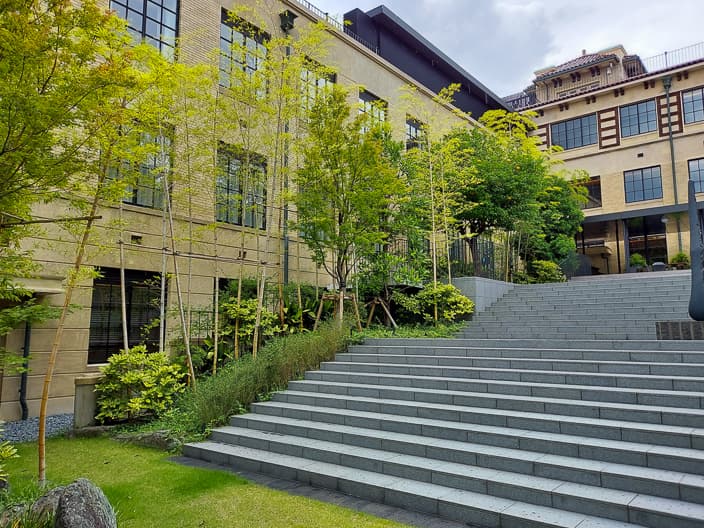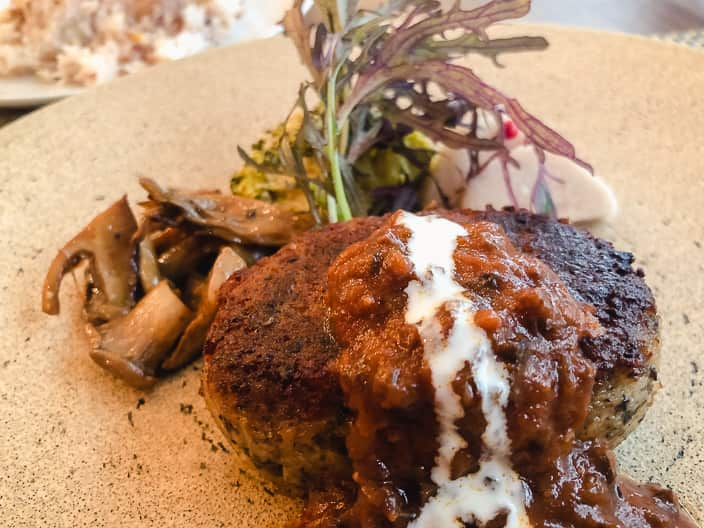At Demachiyanagi Station, I changed to Eizan train and arrived at Yase-Hiei-Yamaguchi Station, the edge of Kyoto city.
There, I was welcomed by a breathtaking view of Rurikoin in Autumn.
Rurikoin temple became very popular thanks to beautiful pictures on Social Networks, of autumn leaves reflected to the table. This temple was actually built as a villa. During Heian era (in A.D. 672), the Jinshin War was raging in Japan. The emperor was injured during a battle and he healed his wound at “Yase Kama-buro” (Japanese style steam-bath). After that, Rurikoin had been loved by Heian nobility and samurai.
Rurikoin temple is usually closed to the temple but for a limited time (in Spring and Autumn), it is open to everyone. I went there in autumn 2020 and because of COVID-19, I had a to make a reservation. It wasn’t the case prior to COVID-19 and it sometimes took about 4 hours to enter, as it was so popular !! For your information, for 2021 Autumn, it’s open from 1st October until 12th December (advanced reservation is required for 30th October until 5th December).
Here is the temple gate. Before entering, the staff checked our reservation.
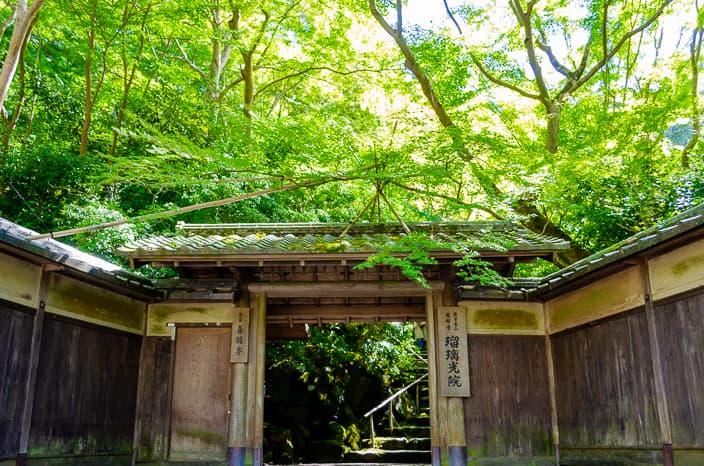
In this vast site, there is Japanese garden and Sukiya-zukuri (traditional style) building. Before reaching the building, we walked along a beautifully mossy approach and it made me more excited.
In the pond, there were many colorful koi carps.
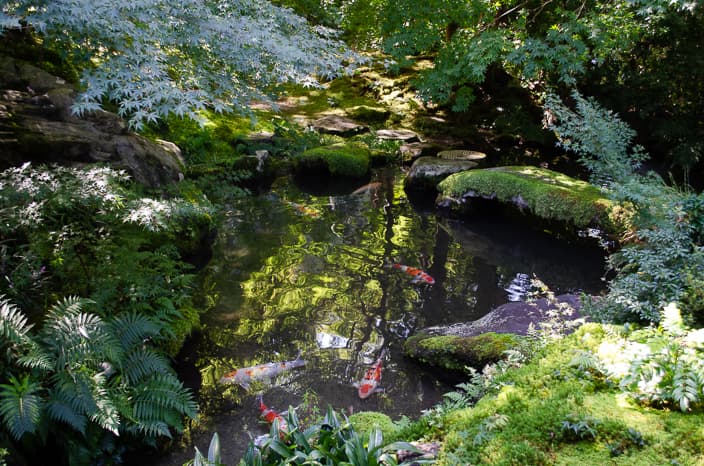
This is the entrance of Sukiya-zukuri style building. Since the entrance and the exit are different, we had to bring own shoes. Here, we were given a Shakyo (sutra copying) paper and a ballpoint pen.
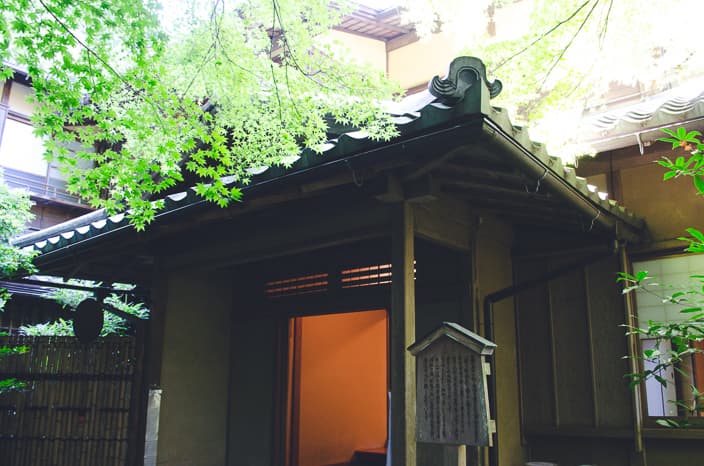
Following the route, I first went up to the 2nd floor. It was a sunny day and the contrast of blue sky and green foliage was so beautiful.
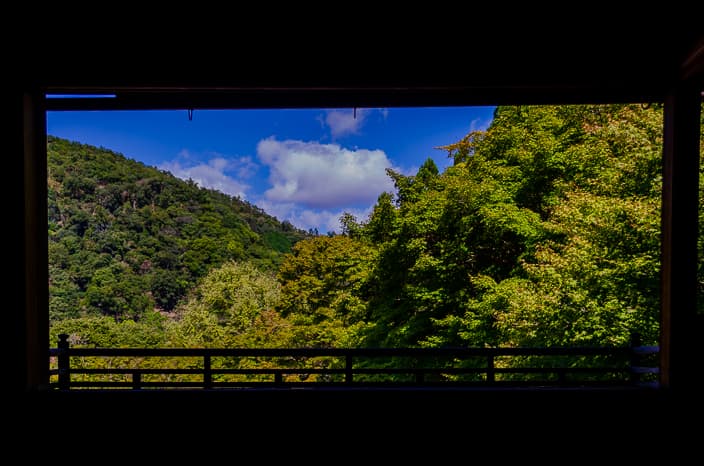
This is the Rutikoin signature “Reflection leaves” – reflected leaves on the table which is perfectly polished. When I saw it, I understood why it’s so popular. When I went there, it was the middle of October and leaves were still green, but when it turns red, it will show us a different scene.
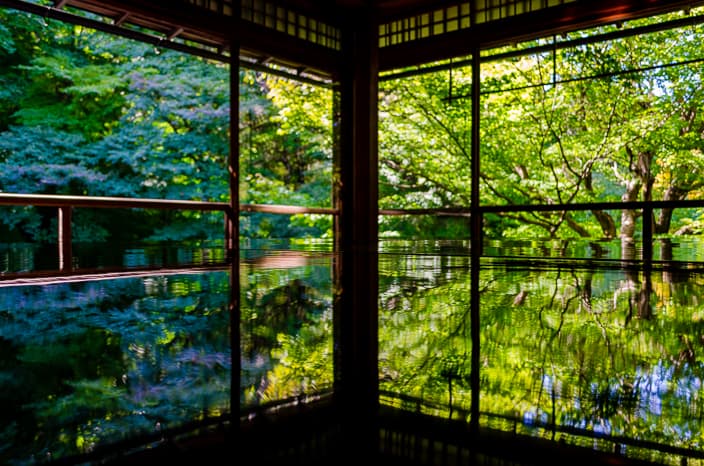
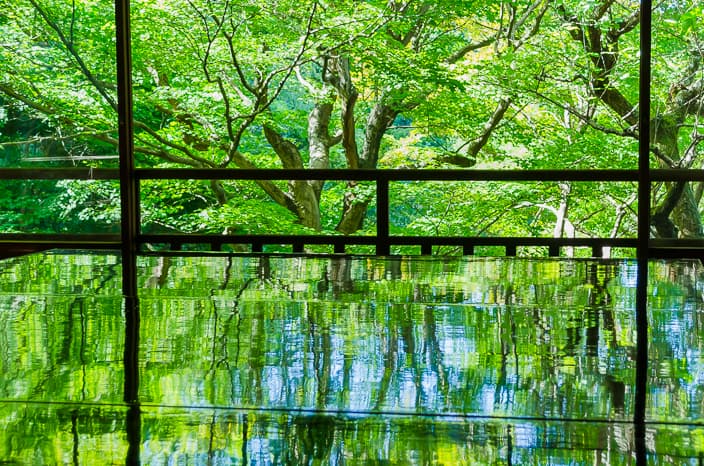
I did Shakyo (sutra copying) and it was easy way: we just traced sutra with a ballpoint pen but it was great opportunity to empty my mind. If you have enough time, why don’t you also try Shakyo?
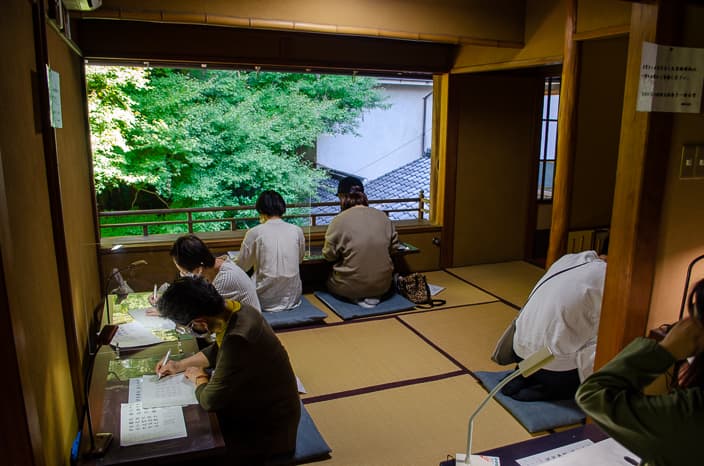
After finishing copying the Sutra, I went down to the first floor. There was the “Yase Kama-buro” (Japanese style steam bath) which was said to have healed the emperor’s wound in the Heian era.
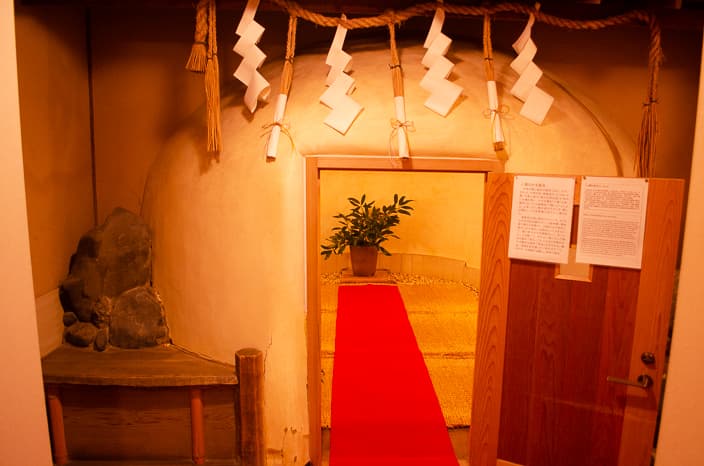
It was also wonderful to see the Ruri-no-niwa from the Drawing room (shoin). The moss was really beautiful and I wanted to seat it for a long time (my daughter didn’t allow it though).
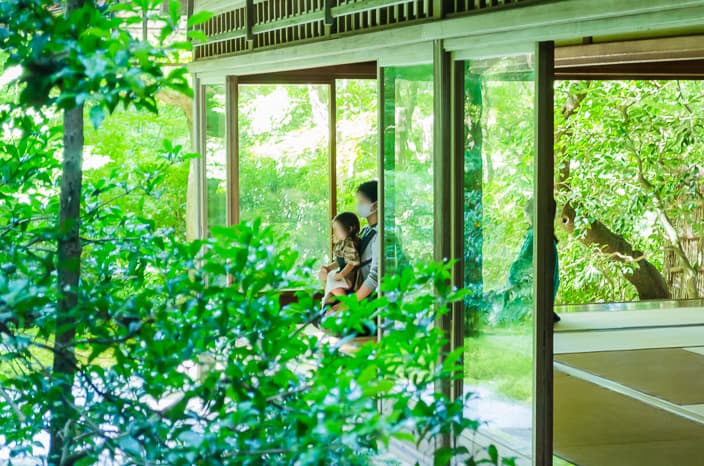
Next, let’s go to meet the principal object of worship, Amida-Nyorai statue. You can leave your Shakyo here and it will be collected by monks.
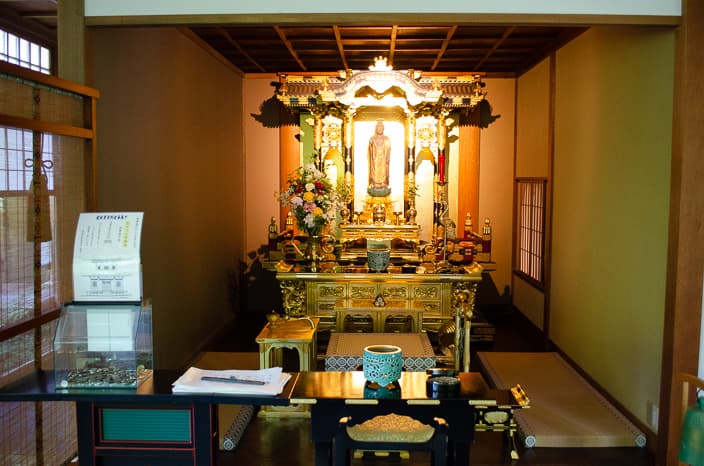
Here is my favorite photo of Kikaku-tei (temple tea house).
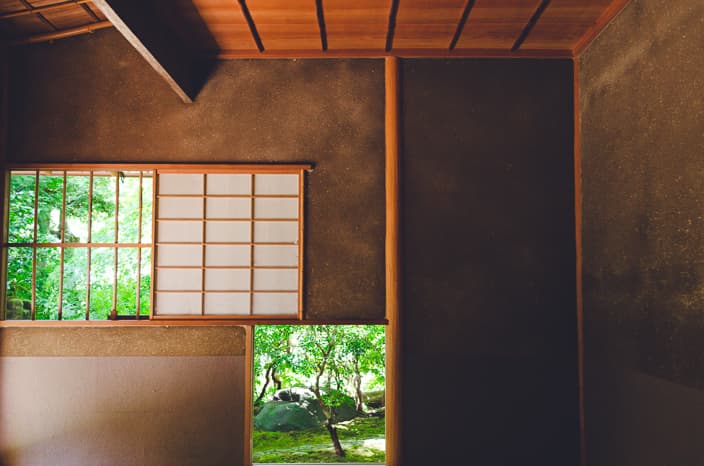
As it’s opened only with limited schedule, it’s difficult to visit, but for me, it was worth visiting. However, it may be because reservation was required and the number of people was limited. If I had to wait for 4 hours, I think I wouldn’t have such a satisfaction!
If you are thinking of visiting Rurikoin, please compare and contrast between your interest, the possible congestion and the time it takes to get there, as it’s on the edge of Kyoto city. By the way, there is no parking lot nearby and the path to the temple is really narrow so please visit by train.
This temple is recommendable especially for the people who have been in Kyoto several times and already visited main places like Kinkakuji temple, Kiyomizudera temple and etc.
Rurikoin Temple
| Address | 55 Kamitakano-higashiyama, Sakyo-ku, Kyoto-shi, KYOTO |
| TEL | 075-781-4001 |
| Access | From Demachi-yanagi Station, get on Eizan Electric Railway (for Yase-Hieizanguchi) to Yase-Hieizanguchi Station.It takes 5 minutes on foot from the station. |
| Admission Fee | 2,000 yen |
| Website | http://rurikoin.komyoji.com/lp/en/ |


